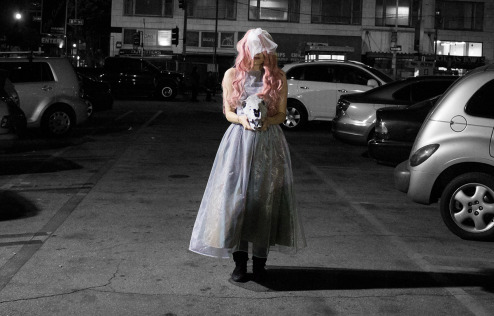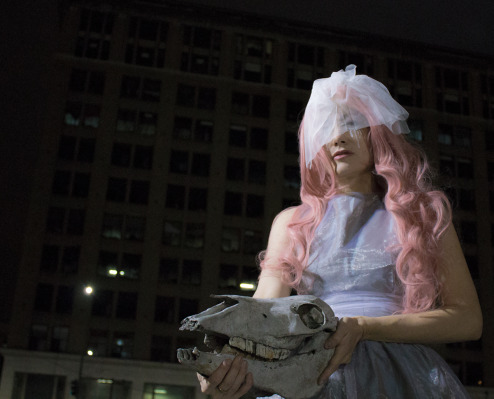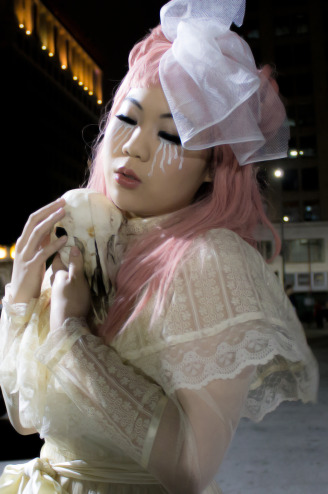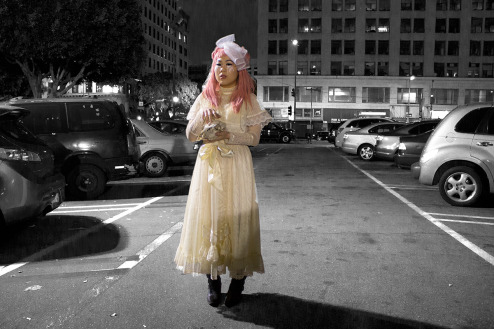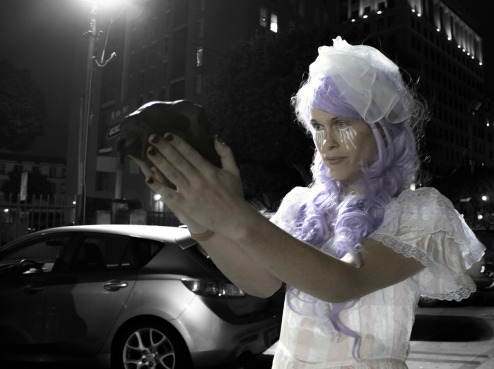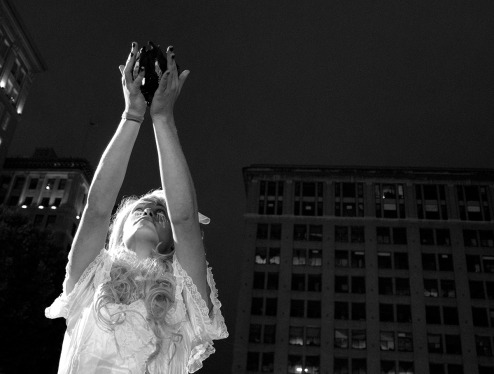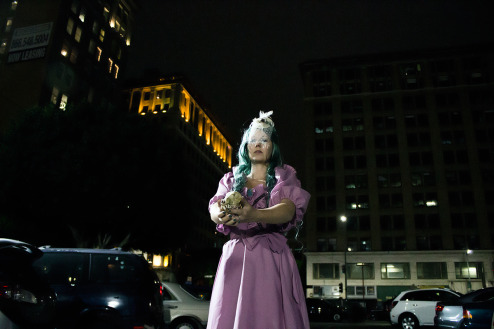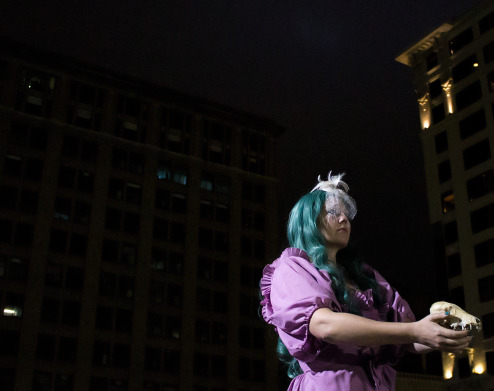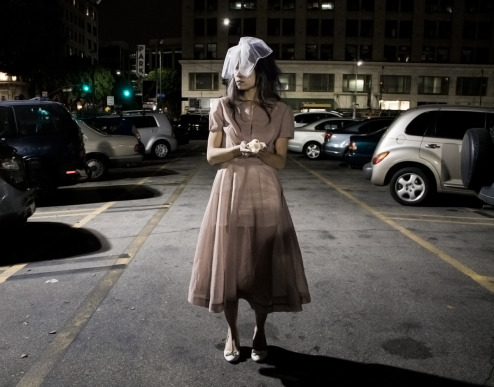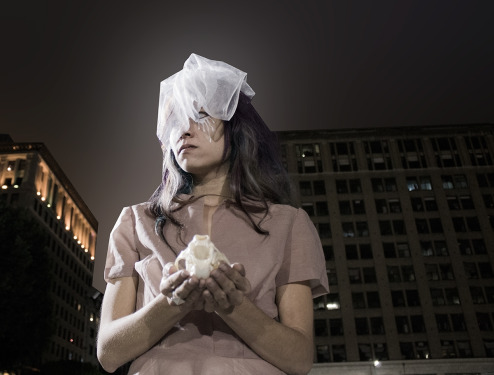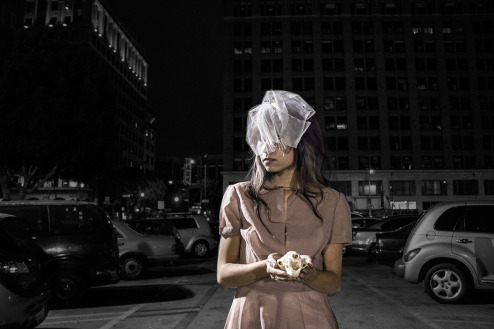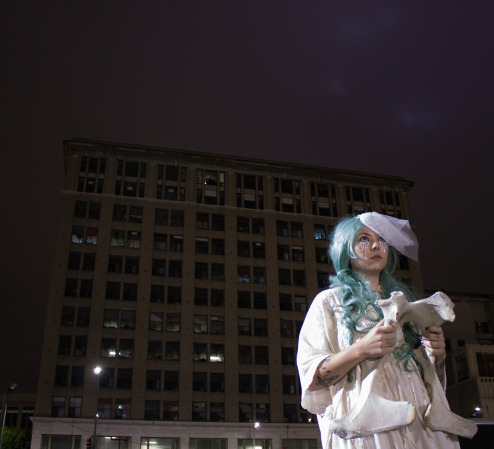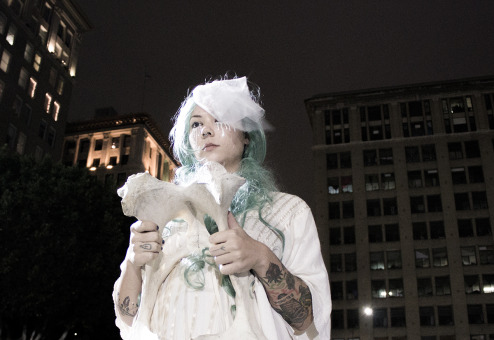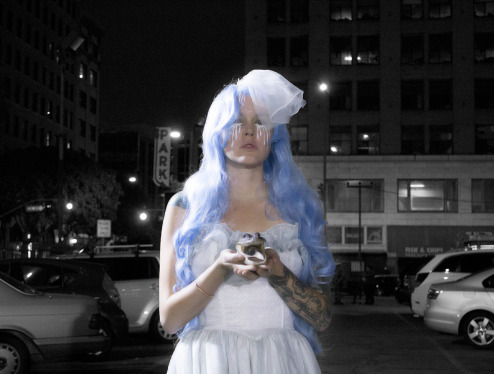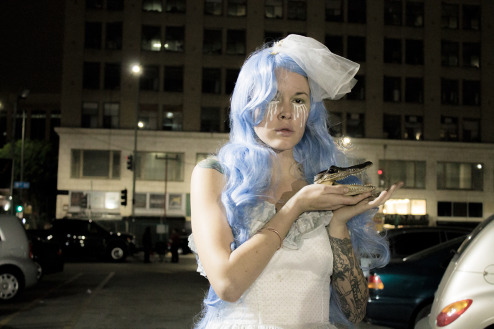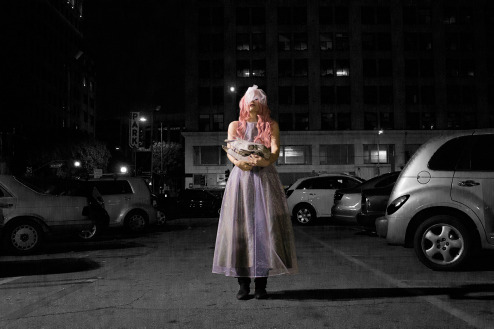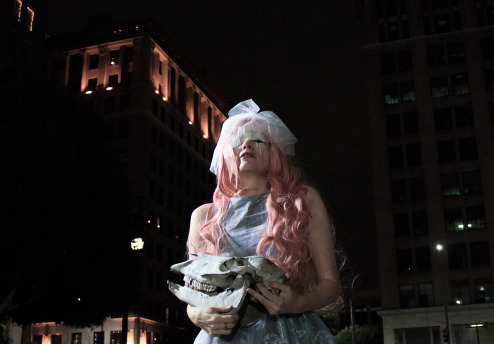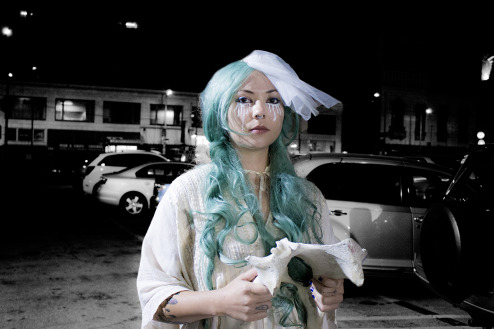A Procession of Unacceptable Women
[Photos 1-3 by Paul Koudounaris 4: Mirabelle Jones]
A Procession of Unacceptable Women (2014)
Performance
Hive Gallery, Los Angeles (CA)
This performance took place at The Hive Gallery as part of Downtown LA Art Walk on 12.11.14. A procession of women in long, ruffled dresses crying milk tears hidden by white lace veils carried animal bones as they slowly walked down Spring St., eventually arriving and passing through the length of The Hive Gallery. The women represented a line of literary heroines of the “fallen women” archetype: female characters who chose their own freedom in the form of death over adherence to societal expectations. In order of appearance these were: Antigone, Ophelia (Hamlet), Anna Karenina, Butterfly (Madame Butterfly), Edna Pontellier (The Awakening), Emma Bovary (Madame Bovary), and Esther Greenwood (The Bell Jar). The woman proceeded through the gallery towards the photo exhibition Portraits of Unacceptable Women. Standing in front of these portraits, the women made a circle of animal bones on the floor and holding golden books, each took turns reading aloud their dying words, invoking a long history of the depiction of “mad” and defiant women in literature. When the last of the last words were spoken aloud, the women stood with their heads hung low as a moment of silence passed. At last, they vanished from the gallery in the same manner in which they came.
Who Are The Unacceptable Women?
In the enduring “marriage or death” ultimatum given to female protagonists in literature and other fictional narratives, the women featured in this performance represent the phantom manifestations of the women who chose death. They are examples of the literary archetype of the “fallen woman,” “witch,” or “spinster” who makes the unacceptable mistake of choosing to violate the societal conditions that oppress her for the sake of her own freedom. This choice inevitably results in the woman’s permanent rejection and subsequent isolation from the community (who condemn her as “unfit” for society) often taking the form of the character’s self-enacted or community-demanded death. These characters drive home the message that refusing to meet societal expectations as a woman is essentially an act of physical and / or social suicide. The message is often heavily laden with the theme of “women in hysterics,” a trope which caricaturizes the authentic emotions and mental health of real women (this is further address in the photo series Unacceptable Women).
However, there is an arc to the history of the depiction of suicidal women characters that is greatly shaped by the introduction of women writing about women towards the turn of the century onwards. Edna Pontellier of The Awakening by Kate Chopin and Esther Greenwood of Sylvia Plath’s dubiously autobiographical novel The Bell Jar are two characters who represent this shift. They are imbued with the spirit of the women authors who historically have chosen to craft strong, independent female characters who defy definition by their male counterparts: Kate Chopin, Virginia Woolf, Amy Tan, Zora Neale Hurston, Flannery O’Connor, Margaret Atwood, Sylvia Plath, Pauline Elizabeth Hopkins, Charlotte Perkins Gilman, Emily Dickinson and many more.
While influenced by the long history of women’s struggle for equality, the performance also asks contemporary questions concerning the status of women and how these narratives continue to influence the modern characterization of both women and men in film and literature. How do female characters continue to be disproportionately represented as dependent upon male characters? How does the strict definition of “women’s” vs. “men’s” roles fail to grant independence and honesty in the form of gender expression and gender fluidity? How does this narrative extend or differ when the protagonist’s race, class, sexual orientation, or gender differs from that of the trope of the wealthy cisgendered straight white female? Where do we find characters in modern film and fiction that break these rules and what are the benefits of producing and promoting them in contemporary works? If not marriage or death, what outcomes are or should be presented to independent female protagonists that reflect the contemporary realities of women’s lives?
With gratitude to Nathan Cartwright and The Hive Gallery for hosting this performance. This performance was an introduction to the photo series Portraits of Unacceptable Women.
CAST
- Antigone: Jessica Wise
- Ophelia: Anna Calloway
- Esther Greenwood: Michelle Jupiter
- Edna Pontellier: Brittany Elizabeth
- Emma Bovary: Roxanne Olivia Abell
- Butterfly: Lola Chan
- Anna Karenina: Penny Folger
- Directed by: Mirabelle Jones





